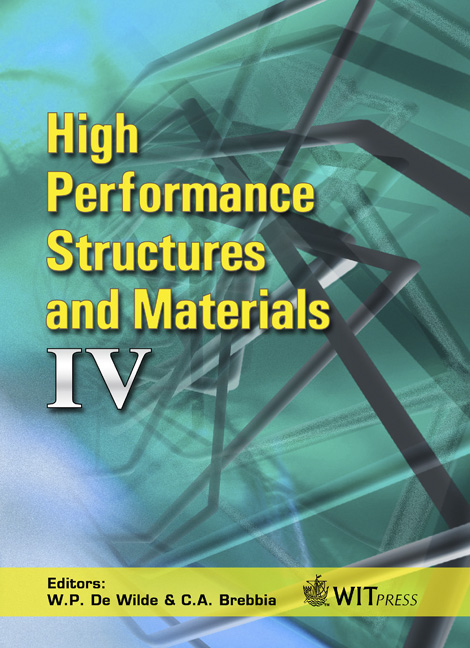MINPL Optimization Of Timber Trusses Considering Joint Flexibility
Price
Free (open access)
Transaction
Volume
97
Pages
8
Page Range
431 - 438
Published
2008
Size
305 kb
Paper DOI
10.2495/HPSM080441
Copyright
WIT Press
Author(s)
S. Šilih, S. Kravanja, P. Dobrila & M. Premrov
Abstract
The paper presents the shape and discrete sizing optimization of timber trusses with the consideration of joint flexibility. The optimization was performed by the Mixed-Integer Nonlinear Programming (MINLP) approach. In the optimization model an economic objective function for minimizing the structure's selfmanufacturing costs was defined. The design conditions in accordance with Eurocode 5 were considered as optimization constraints. The internal forces and deflections were calculated by finite element equations. The structural stifness matrix was composed by considering fictiously decreased cross-sectional areas of all the flexibly connected elements. The cross-section dimensions and the number of fasteners were defined as discrete sizing variables, while the joint coordinates were considered as shape variables. The applicability of the proposed approach is demonstrated through a numerical example, presented at the end of the paper. Keywords: timber, trusses, joint flexibility, shape optimization, discrete sizing optimization, mixed-integer nonlinear programming. 1 Introduction Timber construction is an important part of the infrastructure in a number of areas around the world. Wood has proved to be quite a resilient material, showing relatively high ductility and low density. In addition, the flexibility of mechanical fasteners provides a high damping capacity between the connected timber elements. Well-built timber structures maintain a good performance particularly under the influence of wind and especially earthquake forces. In the last decades, the application of timber trusses has frequently been noticed in all aspects of building construction. Timber trusses have become
Keywords
timber, trusses, joint flexibility, shape optimization, discrete sizing optimization, mixed-integer nonlinear programming.





